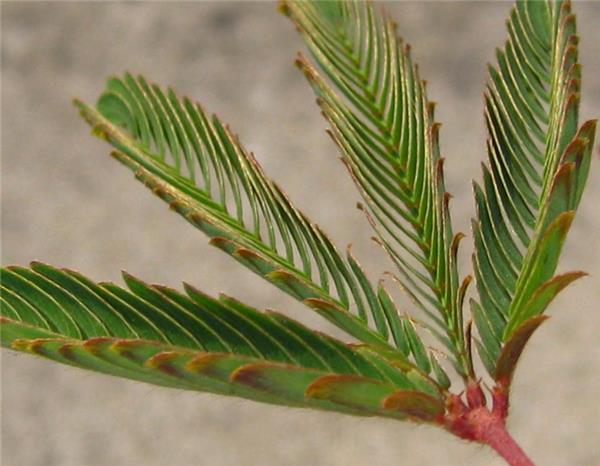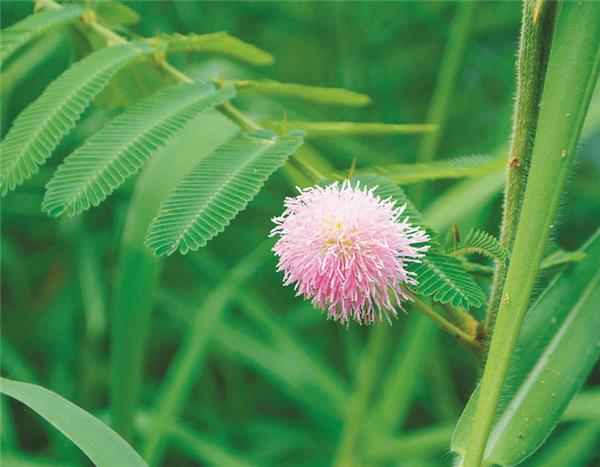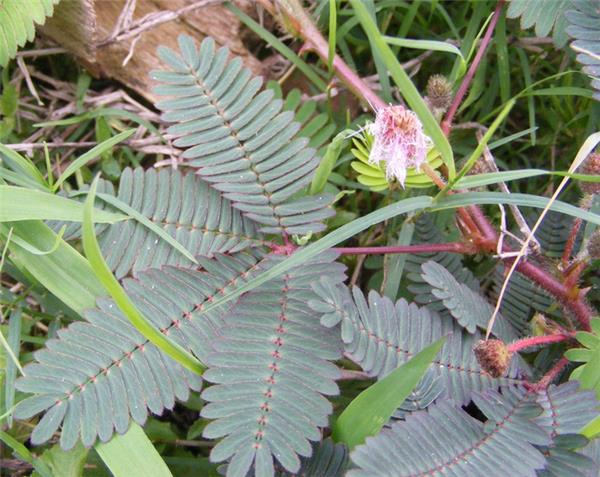Why Mimosa is shy? why Mimosa is shy?
In nature, there is a recommendation called mimosa. If you gently touch the mimosa, its open feathery leaves will immediately close, and then the whole leaf will hang down again, showing a very "shy" look. Do you know why the mimosa is shy? Let's take a look at the reasons why mimosa is shy.

The reason why mimosa is shy
In fact, the phenomenon that mimosa folds up its petiole and lowers its head is not because of shyness, but a response of plants to stimulation and vibration. This response, known as perceptual movement in biology, is the result of changes in cell tension when mimosa is stimulated by external stimuli.
The hometown of mimosa is in Brazil in tropical South America, where there are often strong winds and heavy rain. Whenever the first drop of rain hits the leaves, it immediately closes the leaves and the petiole droops to reduce the damage caused by the storm. This is a way for it to adapt to the changes of external environmental conditions. In addition, this reaction of mimosa can also be seen as a way of self-defense. When an animal touches it, it closes its leaves, and animals dare not eat it any more.

The reason why mimosa is shy is closely related to its native environment. The shy prairie comes from tropical South America, where the climate is bad and there are often high winds and torrential rains. In order to protect itself, when the first drop of Rain Water falls on the mimosa leaf, it will close the leaf promptly and effectively and hang its petiole to avoid the damage of the storm, which is the self-adjustment of the biological world.
At the base of the petiole and at the base of the leaflet of the compound leaf, there is a relatively inflated part called the leaf pillow. When the vibration reaches the leaf pillow, the cell fluid from the parenchyma cells in the upper half of the leaf pillow is discharged into the intercellular space, which reduces the turgor pressure of the cells in the upper part of the leaf pillow, while the parenchyma cell space in the lower part still maintains the original turgor pressure. as a result, the leaflets stand upright, the two leaflets close, and even the whole leaf hangs down.
It has been studied that within 0.088 seconds after being stimulated, the mimosa leaves will close, and after a while, the small leaves will reopen and the petiole will stand up. The recovery time is usually 5-10 minutes. However, if we continue to tease and stimulate its leaves one after another, it will feel "bored" and will no longer react. This is because the continuous stimulation causes the loss of the cell fluid which controls the opening and closing of the leaf occipital cells and can not be replenished in time. Isn't that interesting?

With regard to the maintenance of mimosa, you can refer to the following methods:
1. Choose a suitable place for planting, indoor pot planting is a better practice. The fibrous root of mimosa is few and thin, so it is suitable for sowing and reproduction, and it is best to adopt the method of direct seeding to avoid root injury by transplantation. if you want to transplant, you can choose in the seedling stage.
2. Assist the mimosa to reproduce. When the reproduction is luxuriant and messy, you can choose to plant it in separate pots to ensure adequate light and nutrition.
Another thing to remind you is that mimosa can't be planted with colored chili, because there are red spiders on colored chili, which will kill mimosa.

That's all for today about the reason why Mimosa is shy. This time you know why Mimosa is shy.
Related
- Wuhan Hospital Iron Tree Blooming Result Was Instantly Frightened by the Gardener Master
- Which variety of camellia is the most fragrant and best? Which one do you like best?
- What is the small blue coat, the breeding methods and matters needing attention of the succulent plant
- Dormancy time and maintenance management of succulent plants during dormancy
- Minas succulent how to raise, Minas succulent plant pictures
- What are the varieties of winter succulent plants
- How to raise succulent plants in twelve rolls? let's take a look at some experience of breeding twelve rolls.
- Attention should be paid to water control for succulent plants during dormant period (winter and summer)
- Watering experience of twelve rolls of succulent plants
- Techniques for fertilizing succulent plants. An article will let you know how to fertilize succulent plants.



